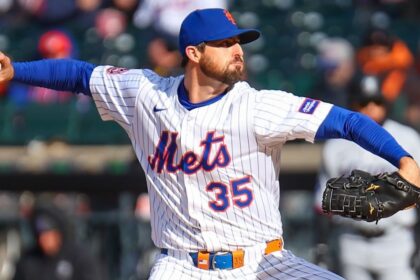The Art of Pitching: Maximizing the Arsenal in MLB
In modern baseball, pitching is much more than throwing the ball; it’s a game of strategy where every pitch counts. MLB pitchers refine their repertoire with scientific precision, always seeking the advantage over the batter. Pitch selection has become an art, similar to the creation of a gourmet menu. But even with all this sophistication, there are inefficiencies in how pitchers use their resources. Game theory analysis in pitch selection reveals which pitchers are optimizing their game and which could improve their performance with strategic adjustments. This analysis is based on Statcast data on the frequency of each pitch type and the effectiveness of each, using tools like FanGraphs. It seeks to identify discrepancies between a pitcher’s most effective pitches and those they use most frequently. In general, pitchers who rely on their best pitches tend to achieve better results. To evaluate this, the “Nash Score” is used, which compares the number of runs a pitcher saves with each pitch in their arsenal with the average runs saved by all their other combined pitches.Pitchers with high Nash Scores may be using less effective pitches too often or not taking advantage of their best pitches, suggesting the need to readjust their strategy. Here’s an analysis of the most and least balanced pitchers based on their Nash Scores, highlighting those who are maximizing their potential and those who may be underperforming on the field.Pitchers with low Nash Scores have achieved a balance in effectiveness between their most used pitches and the rest of their repertoire, implying that any change in the pitch combination would make them less effective overall.
Analysis by Alofoke Deportes

Pitchers with the Greatest Balance in Their Repertoire
The Washington Nationals’ right-handed pitcher Jake Irvin tops the list of the most balanced pitchers. Despite not being a star, Irvin maximizes his repertoire by primarily using three pitches: four-seam fastball, curveball, and sinker. Each of these pitches has similar effectiveness, demonstrating strategic balance. Other pitchers in the top 15 have also shown an ability to optimize their game. Garrett Crochet, of the [Boston Red Sox](https://www.espn.com/mlb/team/_/name/bos/boston-red-sox), combines an elite fastball with a dominant cutter, creating a very effective mix of pitches. Kutter Crawford, also of the Red Sox, follows a similar strategy. Others like Jesus Luzardo and Freddy Peralta use more velocity pitches, while Ryan Pepiot and Corbin Burnes rely on their fastballs as primary pitches. Tarik Skubal, recognized as one of the best baseball pitchers, also appears on this list, highlighting the importance of a balanced pitch selection.Relievers: The Art of Efficiency
Relievers tend to show greater optimization in their pitches because they tend to use fewer types of pitches and the maximum intensity with which they execute them. Paul Sewald, despite an injury, has been one of the best in this aspect, with a fastball and a slider that he uses almost entirely, both with similar effectiveness. Other relievers like Colin Poche, Tanner Scott, Joe Jimenez, and Alexis Díaz also stand out for effectively combining fastballs and sliders. However, there are also pitchers who break this trend, such as Orion Kerkering, who focuses on the slider and uses the fastball as a change-of-pace pitch.










